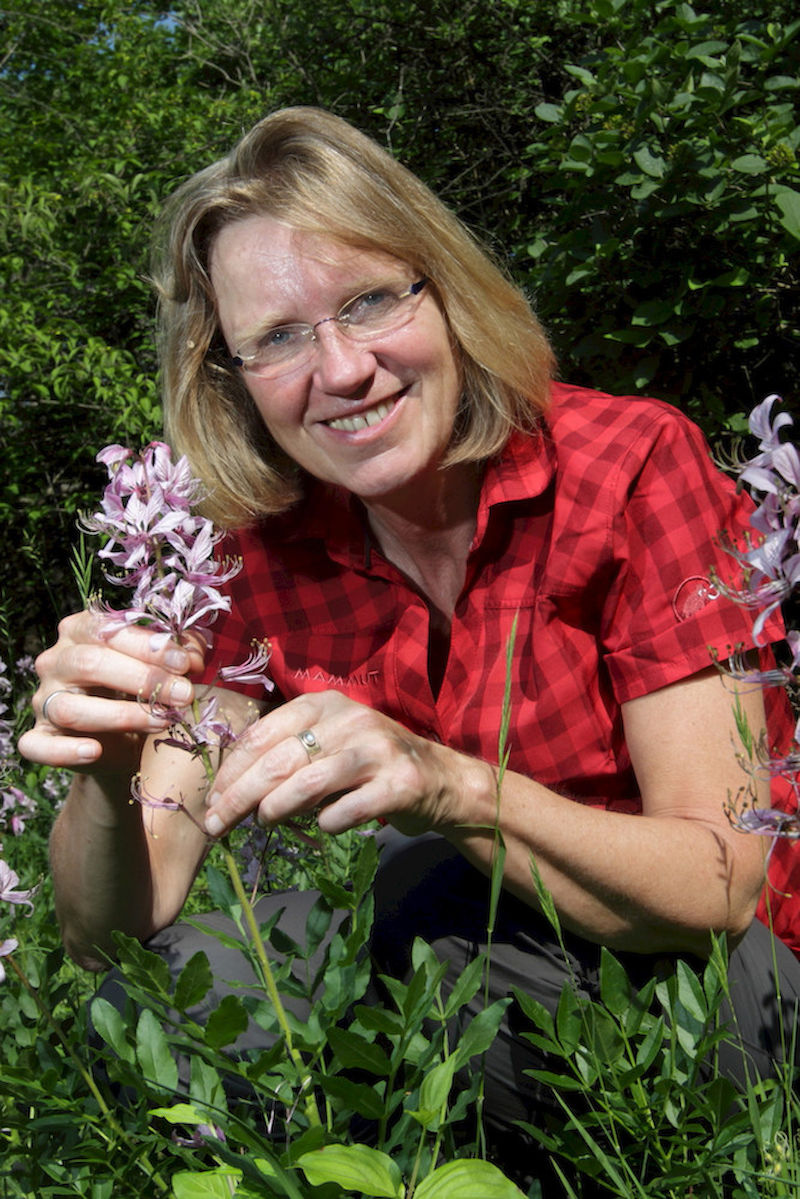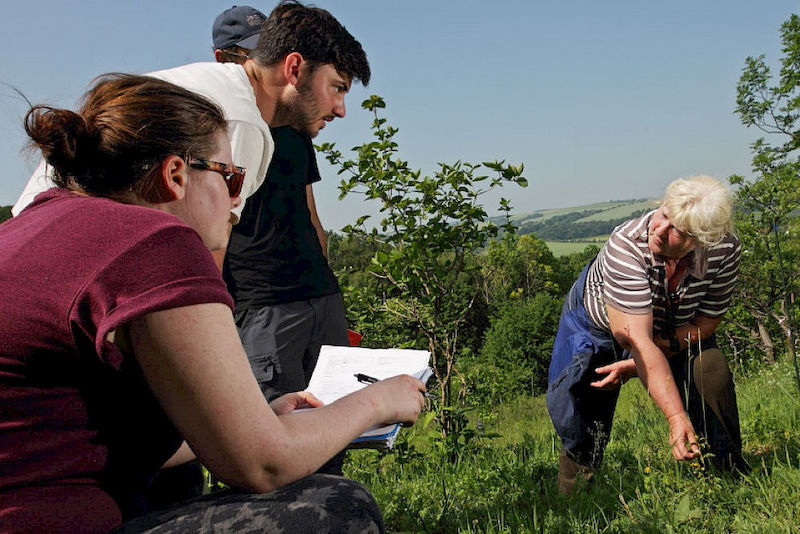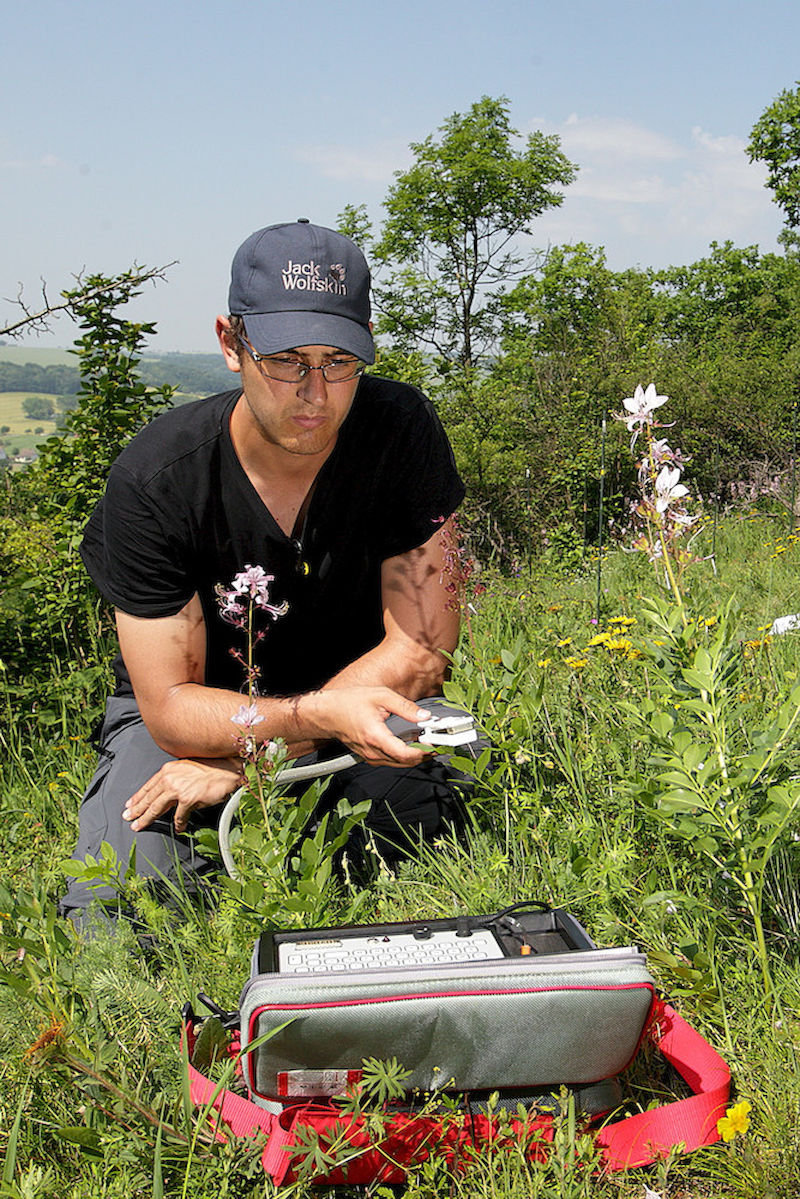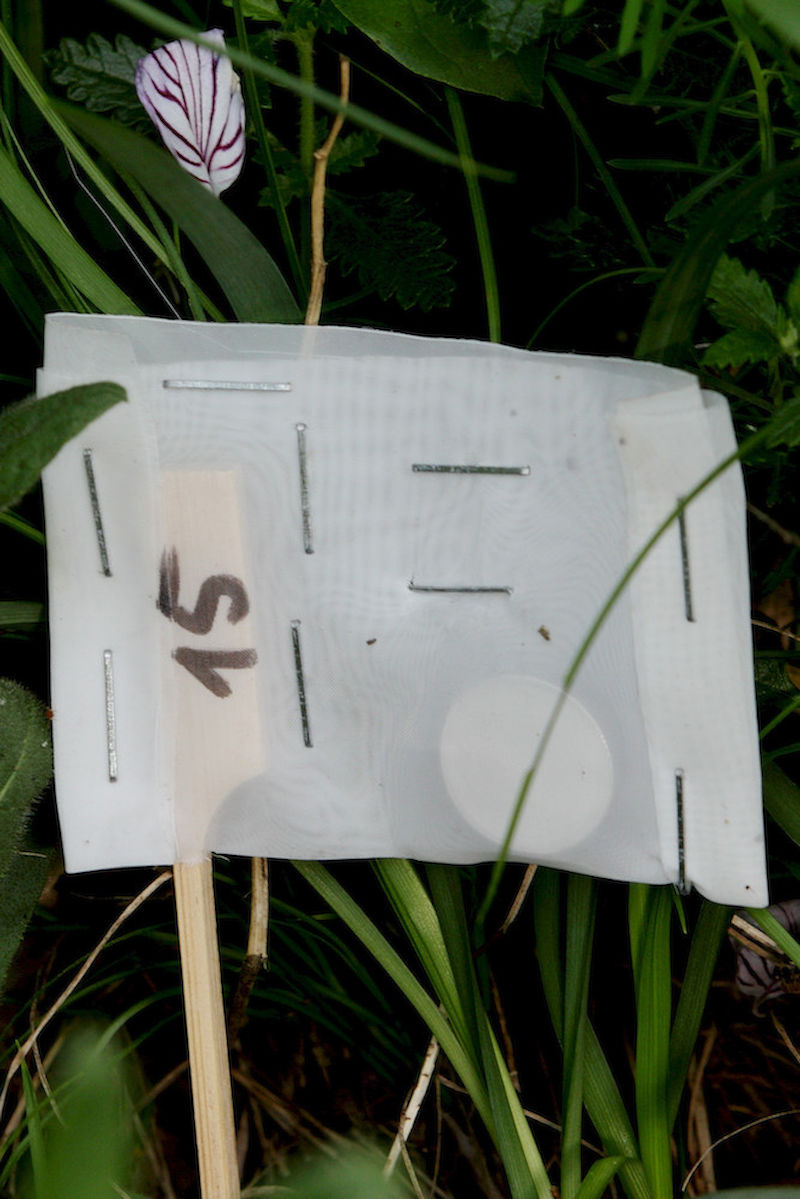Measuring nature
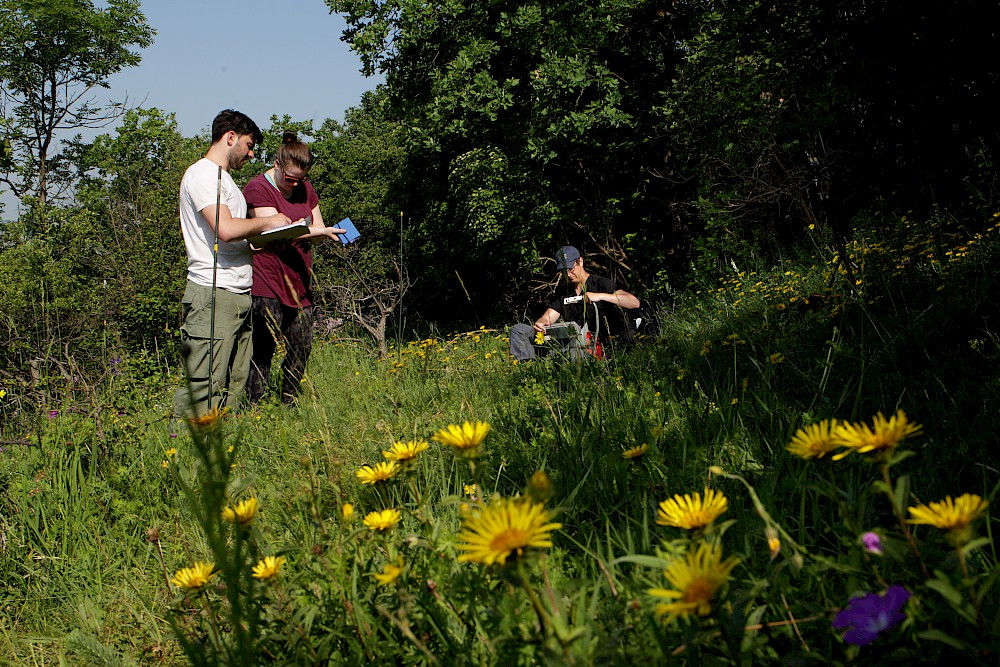
On this warm and humid summer’s day the participants of the master’s module Outdoor Ecology are feeling the heat. Nicole Schindler and Sam Levin are fighting their way through the forest. The two biology students bend aside a few branches in order to count and measure the gas plants better. Dictamnus albus is the Latin name for the one-meter-high shrub with large pink flowers. The plant is at home from Europe to China and everywhere it is under protection – in Germany since 1936. In some states the rutaceous plant is even extinct.
However, several populations of the species can still be found in the Nature Park Saale Unstrut Triasland. “We are in one of the most species-rich regions in Germany. Because of the dry climate, it has extrazonal vegetation and some of the plants that grow here are rather atypical for Central Europe,” says Professor Isabell Hensen. Mediterranean shrubs can be found in this area, one hour’s drive southwest of Halle, along with Eastern European steppe plants. “South-facing hillsides and soils rich in lime are particularly favourable locational conditions that have a positive impact on the biodiversity,” the professor of plant ecology explains.
For twelve years she has been returning to the same gas plant populations with her research associate Dr Monika Partzsch. Some are so well hidden that you wouldn’t find them without knowledge of the area. The students are conducting field research in small groups at four locations this year: Ennsberg, Langer Berg, Nüssenberg and near Balgstädt. Hensen and Partzsch keep in contact with everyone via mobile phone. Nicole Schindler, Sam Levin and Martin Andrzejak are studying the gas plant population near Balgstädt.
They work along a previously determined transect – a marker from which all measuring points are oriented. Their investigation area is on a hillside and runs through several habitats: gas plants grow here in shady woodland, at the edge of the forest and scattered throughout the adjacent dry grassland. “We have the longest transect and I don’t know whether we’ll be able to finish up today,” says 25-year-old Andrzejak. All three students went to Portugal this year for a field week together with Professor Henrique Pereira, who was appointed by the University of Halle and the German Centre for Integrative Biodiversity Research (iDiv) Halle-Jena-Leipzig in 2013.
The students profit from the centre’s reach which has been attracting biodiversity researchers from around the world since its foundation in 2012 by the three universities in Halle, Jena and Leipzig and the Helmholtz Centre for Environmental Research (UFZ). All are studying global biodiversity. “Ecology is currently facing three major challenges: climate change, nitrogen loading through too much fertilising, and a loss in biodiversity. The latter is a particularly urgent problem, above all because organisms are affected,” says Hensen.
Field studies are an important instrument for studying the complex relationships between species: “Plant species, like the ones we’re studying, grow outdoors under much different conditions than in the lab or greenhouse. In nature they interact with animals and with other plants which can decisively influence their development.” For the students this means that not only the gas plant is of interest; the pollinators of the plants also have to be recorded as well all the other vegetation in the investigation area.
It’s important that the biology students know what awaits them during their working lives if they decide to conduct research outdoors. “Even those who do not choose the scientific route will often spend a lot of time outdoors – whether as consultants or as botanists,” explains the professor. The field weeks help the students test whether they like this kind of work because there’s no room for outdoor ecologists to be squeamish. “If you want to be active in this line of work later on you have to be able to carry a load for long distances and sometimes sleep overnight in open terrain,” says Hensen, who has led many field studies in the South American Andes.
Even the investigations near Balgstädt are work-intensive. Today the various life stages of the gas plant have to be counted, their water balance has to be studied and deciduous leaves and flowers have to be collected for examination under a microscope. Martin Andrzejak, Nicole Schindler, and Sam Levin hope to finish collecting data on the vegetation at the edge of the forest today. This means all of the plant species in the three previously determined, different sized plots have to be identified and noted down. The group has already identified more than 200 different species on the dry grassland, at the forest edge, and in the forest.
Identifying plants teaches in-depth knowledge about a species and is a crucial component of the module. “Knowing about a species is important because if you don’t know about it, you can’t protect it,” says Hensen. Nicole Schindler has a particularly good knowledge of herbs; Martin Andrzejak knows more about grasses. But both have to start guessing when it comes to some green leaves. Monika Partzsch and “the Rothmaler”, a standard work on plant identification, come to the rescue.
Botanist Professor Werner Rothmaler published the first edition 66 years ago when he was still teaching as a professor at the University of Halle. Schindler leafs through the 1,000-page volume while Partzsch hands the students the next unidentified green leaf. “Euphorbia cyparissias – the cypress spurge. Four to six weeks ago this species was still flowering,” she finally says. “What does the flower look like?” Sam Levin wants to know. The US-native knows more about North American and tropical plant species than the plant world of Central Europe. Like his fellow students, he prefers to be outdoors than in a lab. “There is a variety of things you can do in the field.”
But even this work can become monotonous, for example, when measurements with the automatic leaf porometer are pending. The device, clipped to a leaf of the gas plant, measures the loss of water vapour through slits on the underside of the leaf. The data enables conclusions to be drawn about the condition of the plant and how it reacts to changing environmental conditions. “We measure 20 times in each habitat,” explains Andrzejak. Before the measurements can be made, a calibration has to be done that requires concentration and a quick reaction when operating the device. The centimetre-high ibuttons, which are placed on the ground marked with small flags, are easier to manage. The tiny microchips measure the temperature. The data can then be directly read from the computer.
The students will put many measurement and analytical methods to practical use for the first time during the field weeks. In the preparatory seminar they became familiar with the field instruments and the new computer programmes since the majority of their working time is spent in the lab and at the computer analysing data. Once the environmental factors are collected with the help of complex statistical programs, statements can be made about the vegetation ecology of the gas plant populations and research hypotheses can be confirmed or rejected.
The results of the student’s work are incorporated into Monika Partzsch’s research. After the initial five investigation years she published her first study on the gas plant in the lower Unstrut valley in 2009 in the journal Tuexenia. Many of the populations have remained stable, to the delight of the botanist from Halle. “Populations have to be a specific size. When there are fewer than 50 individual plants, the gene flow no longer works at some point and the population ultimately dies out,” Isabell Hensen explains.
Several of the gas plant populations set to be studied again this year are considered to be too sensitive to be disrupted. Regardless of this, the maxim of field work is: “We move so attentively through the terrain that it is disrupted no more than it is by the red deer that move about this area,” says Hensen.
Kontakt: Prof. Dr. Isabell Hensen
Institut für Biologie
Tel.: +49 345 55-26210
E-Mail schicken

